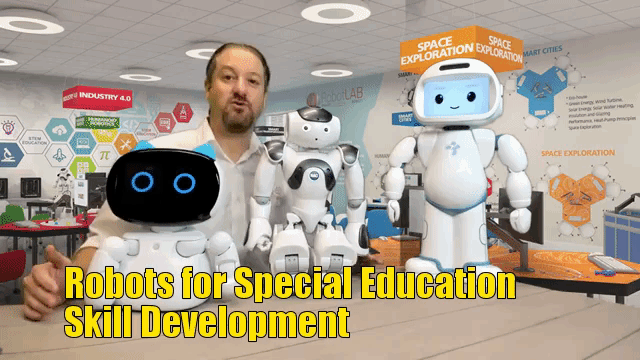 Sandri Vedri: https://unsplash.com/
Sandri Vedri: https://unsplash.com/
Coaching special education students on metacognitive strategies helps them stay motivated during the pandemic.
Distance and hybrid models have become the new way of schooling, and they’re not exactly ideal. Hands-on and differentiated learning can be limited. Figuring out ways to maintain consistency, structure, and collaboration has been challenging. Yet our focus on student success has remained stable.
Rapid changes in how educators and students work and communicate are not the norm, and some students have difficulty coping with the current situation. In particular, students with learning disabilities tend to display struggles with embracing change and adjusting to new structures while maintaining their productivity.
In my inclusive hybrid classroom, we’ve experienced a variety of daily challenges, from muffled audio to remote students showing up late to figuring out alternatives for missing headphones, computers, and books. Facing all of these issues, our fundamental classroom norms were quickly going out the window.
I realized that a majority of my students with learning disabilities were showing signs of frustration, lack of focus, a decrease in motivation, and negative attitudes. These learners were getting burnt out. Flustered and at a loss for what to do, I decided to promote the idea of intentionality, a metacognitive strategy that would help students focus on those things they could control.
INCREASING INTENTIONAL LEARNING
Within my classes, I recognized the need to center intentionality around specific strategies for all learners. The idea was to create strategies and opportunities for students with learning disabilities to monitor their actions and behaviors—and for students without learning disabilities, this would be a chance to reinforce their skills while picking up on some new strategies.
Here are some practical strategies that can be implemented at all grade levels within a hybrid learning format.
1. Bolster positive behaviors: Conduct a climate observation within your classroom. What behaviors are lacking among your students?
When I did this, I found that a majority of my students with learning disabilities were lacking focus and were not listening intently or working productively within groups. I asked myself, “How can I hold students accountable for these behaviors, both virtually and in class?”
I created a rubric connected to those three behaviors that were in need of improvement. Each week students evaluate themselves, and I provide my perspective as well. If we agree on the score, it goes in the grade book as a small habits grade—usually three points a week. If our scores differ, we talk about it and come to a consensus.
2. Create expectations together as a class: The hybrid model may call for changes in your class norms. Set up opportunities for creating rules and expectations unique to your classroom. These rules aren’t set in stone—you and your students can revisit and improve them. Once you have developed a list, make sure to post and share so that everyone—in the room and at home—can view. Refer to them consistently.
For students with learning disabilities, their voice is particularly important within this creation of classroom norms. I find that students with learning disabilities value rules other students might not recognize. For example, the idea of “wait time”—not many students value this because they’ve never heard it. Yet when teachers ask a question and then wait before calling on anyone, it can make a significant difference in everyone’s learning.
3. Set the stage: Post a daily agenda before class. Make sure to include breaks and transitions. This should be posted online and on the board in the classroom. All learners should be able to access the agenda ahead of time in order to mentally prepare.
Students with learning disabilities in particular can benefit in many ways from this strategy. For one, it increases predictability, so there’s less chance they’ll feel uncertain. In turn, this decreases anxiety. An agenda also eliminates confusion and phases out an abundance of questions, and when students view the agenda ahead of time they’re more inclined to practice metacognition, figuring out the strategies and actions they’ll use for greatest success.
4. Take advantage of nonverbal communication: Sometimes communication is tough in a hybrid classroom—voices can be muffled, and people may speak over one another without knowing it. There are times when just checking for understanding can take forever.
Both remote and in-class learners can benefit from systematic use of gestures. Having a set of hand signals and gestures available for learners to use in the hybrid format decreases the chance that they will lose focus, flow, and motivation. Using gestures is quick and can convey understanding, and this strategy offers a different communicative approach for students with learning disabilities who may not feel confident about speaking out loud.
5. Set up revolving leadership roles: Select leaders for each hybrid class, a leader from the remote group and one from the in-class environment. These two learning leaders can offer support by taking notes, directing participation, and boosting motivation by offering positive praise, sending thumbs-up and/or hand-clapping emojis on Zoom, playing motivating music before class, and/or taking suggestions for fun break time activities. Before each class, prepare the leaders with an outline or plan for the upcoming class. Ask for suggestions, ideas, and changes within the plan that might be more beneficial for the class.
This can increase the self-confidence of students with learning disabilities and provide them with an opportunity for voice and decision making.
6. Make time for personal connections: Give students three minutes at the beginning and end of every class to reflect, share plans for the weekend, ask questions, organize themselves, or simply just catch up with one another. This is a simple strategy that really pays off. I always find that when students with learning disabilities are provided time to transition into the start of class, they display more focus and engagement
Learn more about special education with robots here: https://www.robotlab.com/special-education
Discover more solutions of Special Education with RobotLAB!



